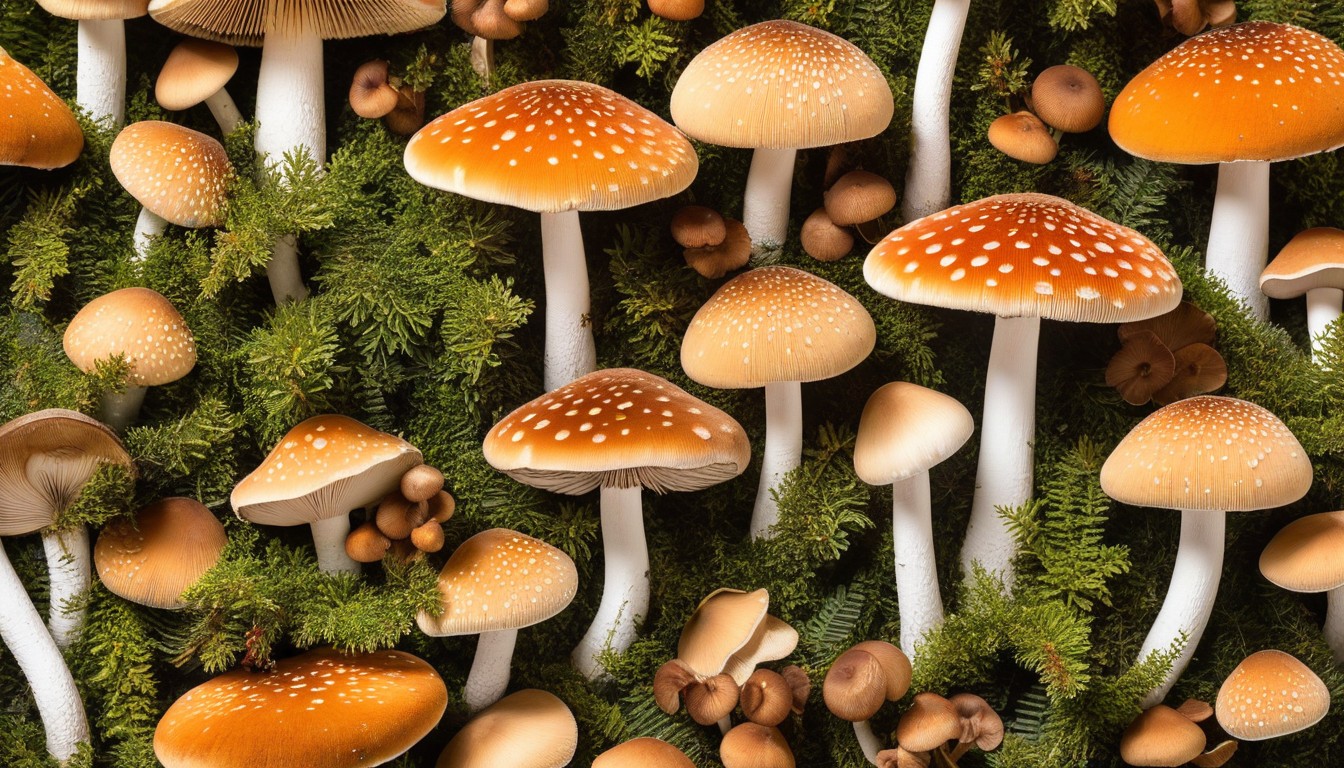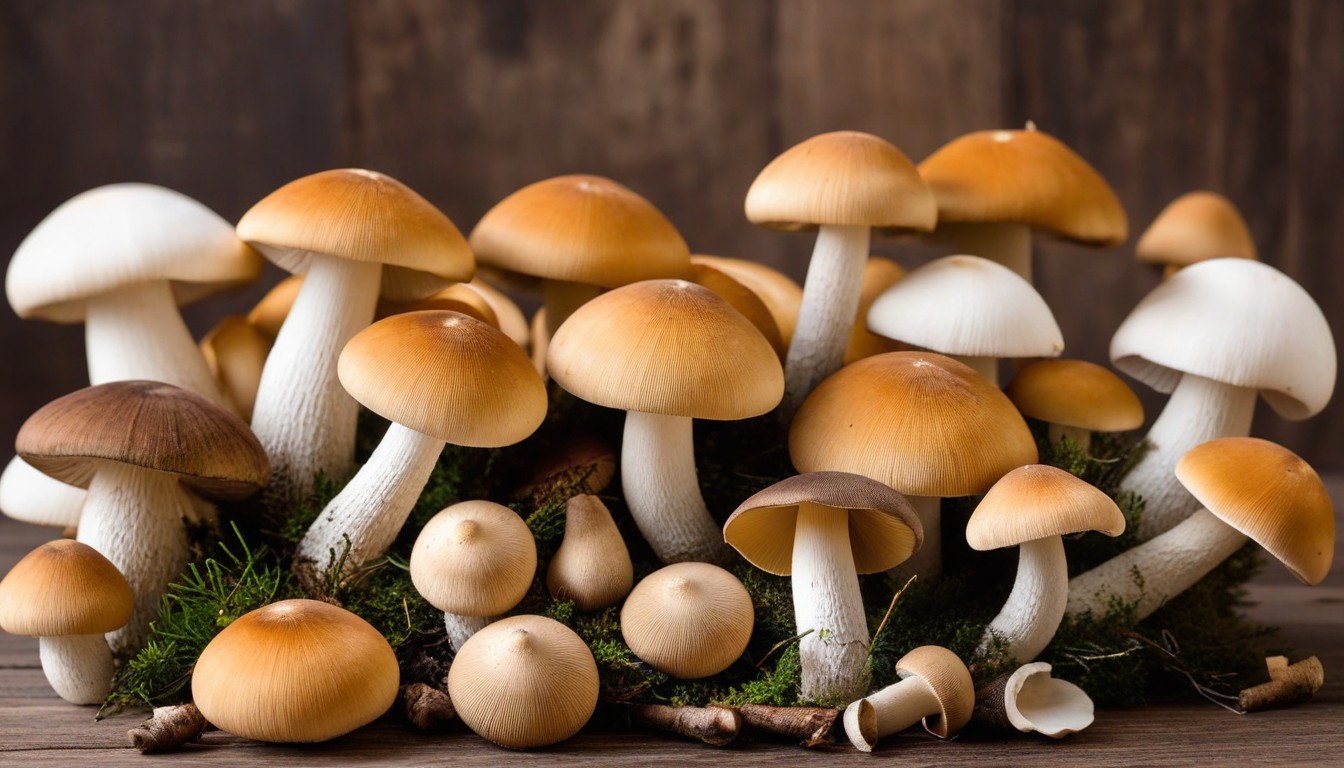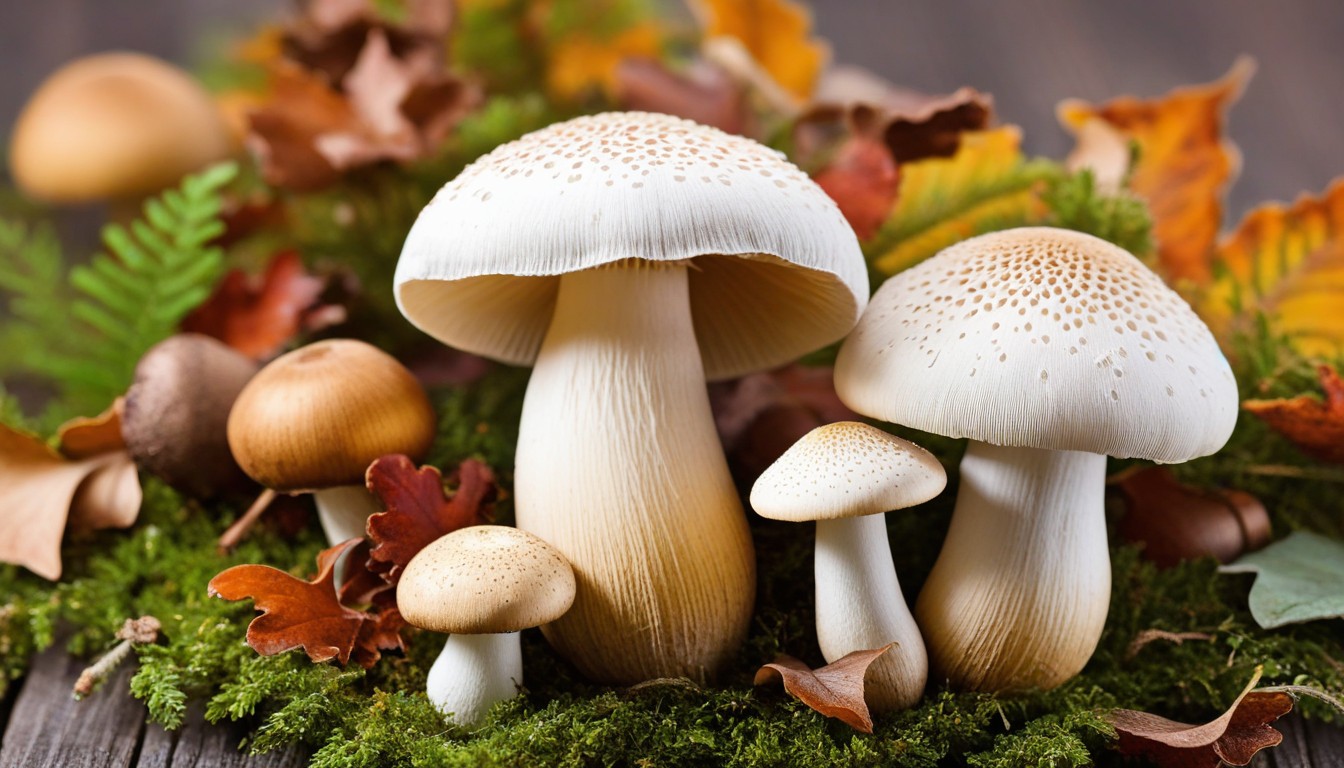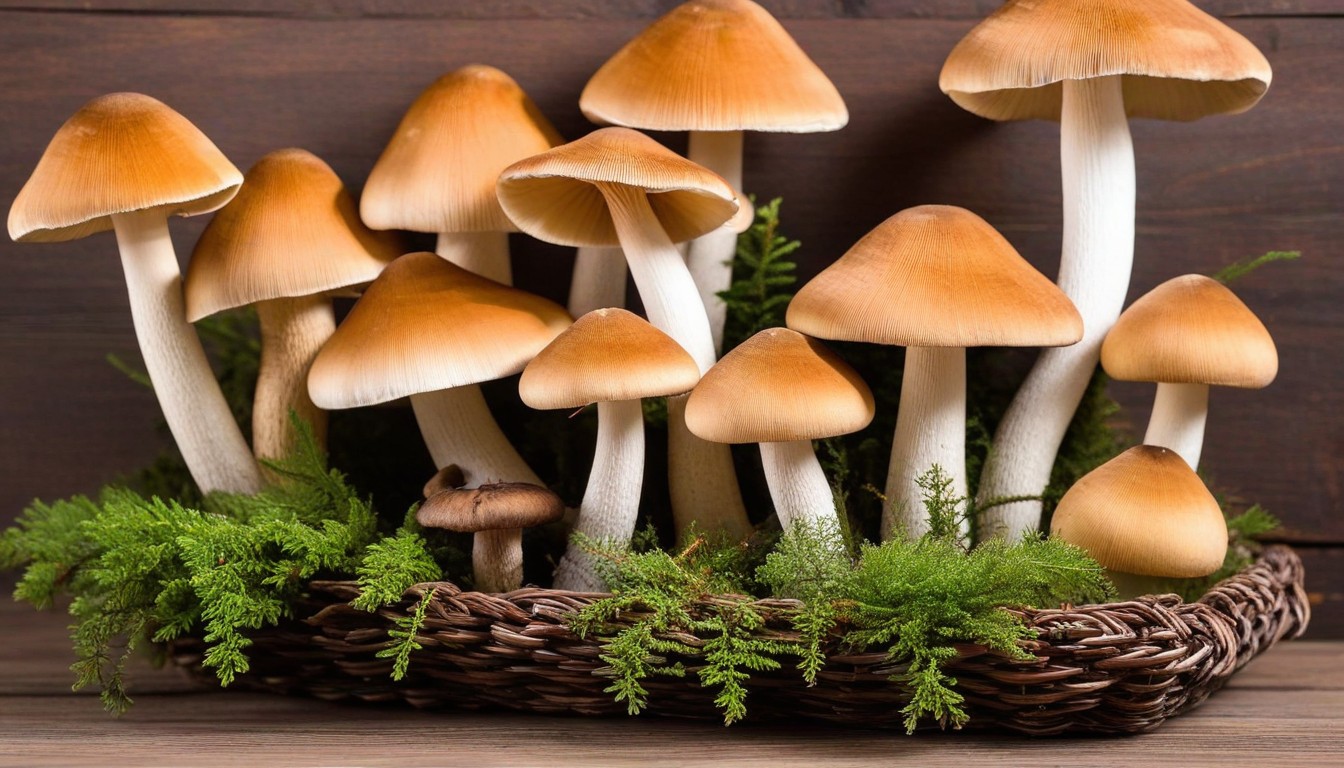Are you looking for a unique and natural way to decorate your home? Preserving mushrooms for decoration can be a fun and rewarding activity that allows you to add a touch of rustic charm to any space. Whether you’re looking to create botanical displays or make beautiful crafts, preserved mushrooms can be an excellent addition to your decor.
In this section, we will provide you with a step-by-step guide on how to preserve mushrooms for decoration. From selecting the right mushrooms to exploring different preservation methods, we will cover everything you need to know to get started. So, let’s dive in and learn how to preserve mushrooms for decoration!
Key Takeaways
- Preserving mushrooms for decoration can add a unique touch of nature to your home.
- Choosing the right mushrooms and cleaning and preparing them properly are crucial for successful preservation.
- Drying and preserving mushrooms in resin are common preservation methods.
- Preserved mushrooms can be used to create beautiful crafts and enhance your home decor.
- Long-term preservation techniques such as freezing, pickling, and preserving mushrooms in oil can help extend their shelf life.
Why Preserve Mushrooms for Decoration?
Before we explore the step-by-step guide on how to preserve mushrooms for decoration, let’s first understand why mushroom preservation is gaining popularity in the world of home decoration.
“Mushrooms can add a rustic and earthy element to any space, making them perfect for creating botanical displays, terrariums, or even fairy gardens.”
Mushrooms are versatile and can be used in various ways to elevate the decor of your home. By preserving mushrooms, you can enjoy their beauty for a longer period and incorporate them into different creative projects. Not only do they add a unique touch of nature to your home, but they are also sustainable, making them an eco-friendly choice for home decoration.
Benefits of Mushroom Preservation for Home Decoration:
|
Benefits |
Explanation |
|---|---|
|
Longevity |
Preserved mushrooms can last for months or even years, allowing you to enjoy their natural beauty for an extended period. |
|
Visual Appeal |
Mushrooms have a unique and rustic appearance that can enhance the aesthetic value of your home decor. |
|
Versatility |
You can use preserved mushrooms in various decorations, including botanical displays, terrariums, and fairy gardens. |
|
Eco-Friendly |
Preserving mushrooms is a sustainable choice for home decoration, reducing waste and promoting the use of natural materials. |
Now that we understand the benefits of mushroom preservation for home decoration let’s move on to the next section to discover how to choose the right mushrooms for your projects.
Choosing the Right Mushrooms
Not all mushrooms are suitable for preservation, so it’s essential to choose the right ones. The following mushroom species are ideal for decoration and preservation:
|
Mushroom Species |
Characteristics |
|---|---|
|
Button mushrooms |
Small, white, and plump. Ideal for drying and preservation. |
|
Uniquely shaped, with a delicate texture. Best for resin preservation. | |
|
Shiitake mushrooms |
Large and meaty, with a rich, savory flavor. Perfect for oil preservation. |
|
Maitake mushrooms |
Also known as hen-of-the-woods, they have a feathery texture and earthy flavor. Great for both drying and resin preservation. |
When selecting mushrooms, choose specimens that are fresh and visually appealing. Avoid mushrooms that are slimy, discolored, or have an unpleasant odor.
Cleaning and Preparing Mushrooms

Properly cleaning and preparing mushrooms is crucial for successful preservation. Follow these steps to ensure your mushrooms are ready for preservation:
- Choose fresh mushrooms: Select mushrooms that are plump and free of blemishes or bruises. If possible, choose mushrooms with firm stems and caps that are tightly closed.
- Trim the stems: Use a sharp knife to trim the stems of the mushrooms at the base, removing any dirt or debris.
- Wipe the mushrooms clean: Use a damp paper towel or a soft-bristled brush to gently wipe the mushrooms clean. Avoid soaking them in water as mushrooms are highly absorbent and can become waterlogged, affecting both texture and flavor.
- Cut the mushrooms: Depending on your preservation method, you may need to slice or chop the mushrooms. Ensure that the pieces are of uniform size to ensure even drying or preservation.
Tip: If you’re using mushrooms that have a lot of dirt or debris, you can rinse them in cold water and pat them dry with a paper towel. Make sure to do this step quickly and only as necessary to avoid waterlogging the mushrooms.
|
Type of Mushroom |
Cleaning Method |
|---|---|
|
Cremini, Shiitake, Portobello |
Wipe with a damp paper towel or soft-bristled brush |
|
Morel, Chanterelle |
Soak briefly in cold water (1-2 minutes), rinse and pat dry |
|
Button, Enoki, Oyster |
Wipe with a damp paper towel or soft-bristled brush. If necessary, rinse and pat dry quickly. |
Once you’ve cleaned and prepared your mushrooms, you’re ready to begin the preservation process.
Drying Mushrooms: A Key Method for Mushroom Preservation

When it comes to mushroom preservation methods, drying is one of the most popular and straightforward techniques. Drying mushrooms removes the moisture, allowing them to be stored for an extended period without spoiling. It also intensifies their flavor, making them a great addition to soups, stews, and sauces.
The Drying Process
To dry mushrooms, you need to follow a few simple steps:
- Clean the mushrooms – wipe them down with a damp cloth to remove any dirt and debris.
- Cut the mushrooms into thin slices, ensuring they are of even thickness.
- Arrange the sliced mushrooms on a baking sheet or a wire rack placed in a dry, well-ventilated area.
- Allow the mushrooms to dry for several days until they become dry and crispy.
Alternatively, you can use a dehydrator or an oven to speed up the drying process. To use an oven, preheat it to the lowest setting, then place the mushrooms on a baking sheet and leave them in the oven with the door slightly ajar for several hours until they are dry. Make sure to keep an eye on them to prevent them from burning or overheating.
Tips for Drying Mushrooms
To ensure the best results when drying mushrooms, here are some essential tips to keep in mind:
- Use fresh mushrooms – mushrooms that are not fresh or have started to spoil won’t dry properly and may develop mold.
- Choose the right type of mushrooms – some mushrooms, such as shiitake or porcini, are better for drying than others.
- Ensure even slicing – the thicker parts of the mushrooms take longer to dry, so it’s essential to slice them evenly.
- Keep the drying area well-ventilated – it’s crucial to dry mushrooms in a dry and well-ventilated area to avoid moisture buildup and prevent the growth of mold.
Dried mushrooms can be stored for an extended period in airtight containers or vacuum-sealed bags. They can be rehydrated when needed by soaking them in hot water or broth, making them a versatile ingredient for various dishes.
Preserving Mushrooms in Resin for Beautiful Crafts

If you’re looking for a unique and beautiful way to preserve mushrooms for decoration, consider preserving them in resin. This technique involves encasing the mushrooms in a clear, hard resin that protects and preserves them for an extended period.
Materials Needed:
- Air-dried mushrooms
- Clear epoxy resin
- Resin molds
- Gloves
- Measuring cups
- Stirring sticks
The Step-by-Step Process:
Before you start, ensure you’re working in a well-ventilated area. Here are the steps to follow:
- Prepare your mushroom specimens: Clean and dry your mushrooms thoroughly, removing any dirt or debris.
- Choose your molds: Select resin molds that fit your mushrooms.
- Mix the resin: Wear gloves and combine the two-part epoxy resin according to the manufacturer’s instructions.
- Pour the resin: Pour enough resin into the mold to cover the bottom. Allow it to settle and release any air bubbles.
- Add the mushrooms: Once the resin has settled, place your mushroom on top.
- Fill the mold: Pour the remaining resin into the mold to cover the mushroom completely.
- Release air bubbles: Gently release any trapped air bubbles by tapping the mold.
- Cure the resin: Follow the manufacturer’s instructions and allow the resin to cure completely.
- Remove the mold: Once the resin has cured, pop it out of the mold.
Now that you have your preserved mushrooms in resin, you can use them for various creative projects such as jewelry, paperweights, or even as stand-alone pieces of art.
Tip: If you want to add color to your preserved mushrooms, you can tint the resin by adding a small amount of acrylic paint or pigment powder.
Preserving mushrooms in resin is a fun and rewarding activity that allows you to create stunning and long-lasting decorative pieces. Whether you’re a seasoned crafter or a beginner, this technique is easy to master and offers endless possibilities for creativity.
Decorating with Preserved Mushrooms

Now that you have your beautiful preserved mushrooms, it’s time to explore all the creative ways you can use them to decorate your home. Whether you want to create a woodland-inspired centerpiece or add a whimsical touch to your walls, preserved mushrooms offer endless possibilities for crafting and decorating.
Table Displays
One of the easiest ways to incorporate preserved mushrooms into your decor is by creating a tabletop display. You can use a decorative bowl or tray as a base and arrange the mushrooms with other natural elements such as moss, twigs, or pine cones. Add some candles or fairy lights for a magical touch.
Wall Art
Preserved mushrooms can also make unique and charming wall art. You can create a simple and elegant arrangement by framing a few dried mushrooms, or you can get creative and make a more elaborate mushroom collage. Arrange a variety of preserved mushrooms on a canvas or wooden board and embellish with other natural elements such as leaves or feathers.
Terrariums
Terrariums are a beautiful way to showcase preserved mushrooms while also creating a miniature garden. You can use a glass jar or vase and fill it with soil, moss, and other plants, and arrange the mushrooms on top. You can even add some miniature figurines to create a whimsical scene.
Crafts
Preserved mushrooms can also be used for a variety of crafts and DIY projects. You can make a mushroom wreath using a foam wreath base, preserved mushrooms, and other natural elements. You can also create a mushroom diorama by arranging mushrooms in a shadow box with other natural elements such as stones or dried flowers.
Whether you’re creating a decorative centerpiece, wall art, terrarium, or craft project, preserved mushrooms offer a unique and charming touch to any home decor. Let your creativity run wild and discover all the possibilities of decorating with preserved mushrooms!
Long-Term Preservation Techniques
If you want to enjoy your preserved mushrooms for an extended period, you can use additional techniques to keep them fresh and tasty. Here are some effective long-term preservation methods:
Freezing
Freezing is a simple and convenient way to preserve mushrooms for an extended period. Here’s how to do it:
- Clean and slice the mushrooms, removing any unwanted parts.
- Blanch the mushrooms in boiling water for 3-5 minutes.
- Drain the mushrooms and rinse them with cold water.
- Pat dry the mushrooms and place them in freezer bags or containers.
- Label the bags or containers with the date and type of mushrooms.
- Place them in the freezer and use within 8-10 months.
Note: Frozen mushrooms can be used directly in cooked recipes without thawing them.
Pickling
Pickling mushrooms is a great way to preserve them while adding a tangy and flavorful twist. Here’s a simple recipe:
“In a saucepan, combine 1 cup of white vinegar, 1 cup of water, 1 tablespoon of salt, and 1 tablespoon of sugar. Bring to a boil, stirring until the salt and sugar dissolve. Add 1 pound of cleaned and sliced mushrooms, and simmer for 5-7 minutes. Remove from heat and let the mushrooms cool in the brine. Transfer the mushrooms and the brine to sterilized jars, making sure the mushrooms are completely covered. Seal the jars and store in the refrigerator for up to 3 months. Enjoy your pickled mushrooms as a snack, condiment, or appetizer.”
Preserving Mushrooms in Oil
Preserving mushrooms in oil is a delicious and versatile way to keep them for an extended period. Here’s how to do it:
- Clean and slice the mushrooms, removing any unwanted parts.
- In a saucepan, heat some oil (olive, vegetable, or sunflower) until hot but not smoking.
- Add the mushrooms and stir them to coat evenly with the oil.
- Simmer the mushrooms in the oil for 10-15 minutes or until tender.
- Remove from heat and let the mushrooms cool in the oil.
- Transfer the mushrooms and the oil to sterilized jars, making sure the mushrooms are completely covered.
- Seal the jars and store in the refrigerator for up to 1 month. You can use the flavored oil for cooking or dressings.”
Mushroom Storage
Regardless of the preservation method you choose, proper storage is essential to keep mushrooms fresh and safe to eat. Here are some tips:
- Store fresh mushrooms in a paper bag or a container with a lid, in the refrigerator’s vegetable crisper. Avoid plastic bags, as they can trap moisture and lead to spoilage.
- Do not wash mushrooms until you’re ready to use them, as excess moisture can cause them to deteriorate.
- Label and date the preserved mushrooms to ensure you use them within the recommended time frame.
- Store frozen mushrooms in a separate compartment of the freezer, away from other foods.
- Check the preserved mushrooms regularly for signs of spoilage, such as discoloration, slime, or a foul odor. Discard any mushrooms that look or smell questionable.
By following these long-term preservation techniques, you can enjoy delicious mushrooms all year round and add them to your favorite recipes or snacks. Experiment with different preservation methods and enjoy the unique flavors and textures of preserved mushrooms.
Conclusion
Preserving mushrooms is a fascinating and fun activity that lets you enjoy the beauty of nature for a longer time. With a bit of effort, you can preserve mushrooms and use them to spruce up your home decor or create unique crafts.
Remember to choose mushrooms that are fresh, plump, and visually appealing. Clean them thoroughly and prepare them properly to ensure the best results. Explore different preservation methods such as air drying, dehydrating, or resin preservation to achieve the desired outcome.
Tips for Successful Mushroom Preservation
Here are some additional tips to help you succeed in preserving mushrooms:
- Avoid using moldy or damaged mushrooms, as they will not preserve well.
- Use a soft brush or cloth to remove any dirt or debris from the mushrooms.
- Allow the mushrooms to dry completely before preserving them.
- Store your preserved mushrooms in a cool, dry place away from direct sunlight and moisture.
With the right approach and a bit of creativity, you can turn preserved mushrooms into beautiful decorative pieces. Use them to create unique centerpieces, wreaths, or terrariums and add a touch of natural wonder to your home. So why wait? Get started on your mushroom preservation project today and let your imagination take flight!
FAQ
How long can preserved mushrooms last?
Preserved mushrooms can last for several months to a few years, depending on the preservation method used and how they are stored. Properly dried mushrooms can retain their quality for up to a year, while mushrooms preserved in resin or oil can last for several years if stored correctly.
Can I use any type of mushroom for decoration?
Not all mushrooms are suitable for decoration. It is important to choose mushrooms that are visually appealing and have a sturdy structure. Popular choices for mushroom decoration include porcini, morel, and oyster mushrooms, but it’s best to research different species and their suitability for preservation.
How should I clean mushrooms before preserving them?
To clean mushrooms, gently brush off any dirt or debris using a soft brush or a damp cloth. Avoid washing mushrooms as they can absorb water, which may affect their texture and quality. If necessary, you can lightly rinse them under running water, but make sure to pat them dry before proceeding with the preservation process.
Can preserved mushrooms be eaten?
This depends on the preservation method used. If mushrooms are preserved using the drying method, they can be rehydrated and cooked. However, if mushrooms are preserved in resin or oil, they are generally not recommended for consumption as these methods are primarily for decorative purposes.
How do I store preserved mushrooms?
Proper storage is essential for preserving the quality of mushrooms. Dried mushrooms should be stored in airtight containers in a cool, dry, and dark place. Mushrooms preserved in resin or oil should be kept away from direct sunlight and stored in a cool room temperature environment. It’s best to check the specific preservation method for additional storage instructions.
Can I preserve mushrooms that I find in the wild?
It’s generally recommended to use commercially grown mushrooms for preservation, as they are more controlled and have less risk of contamination. If you choose to use wild mushrooms, make sure you are confident in identifying the species correctly and that they are safe for consumption. It’s always best to consult with an expert or experienced forager.

